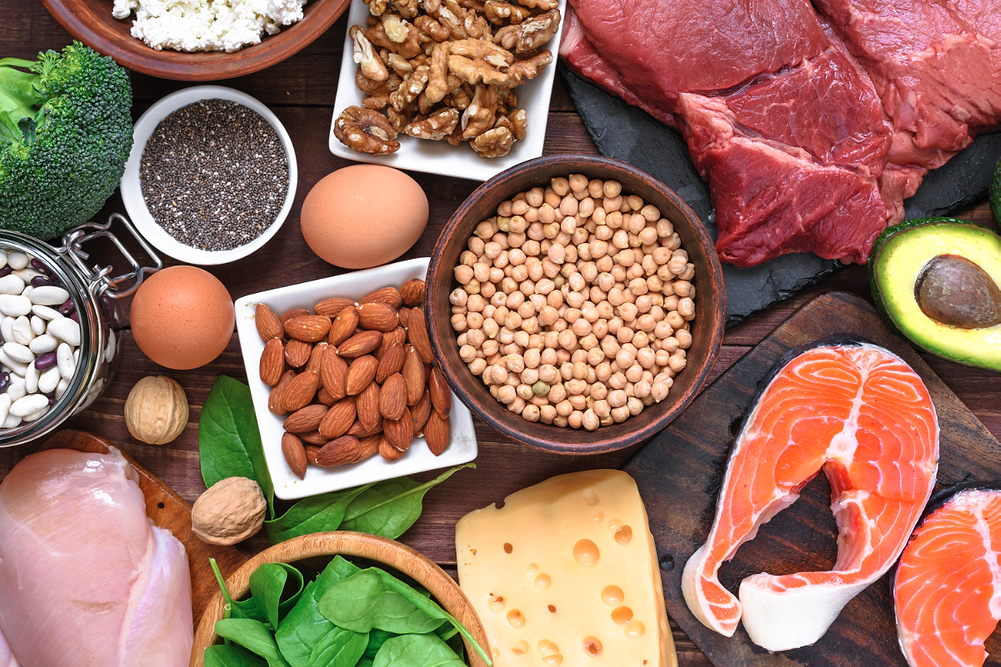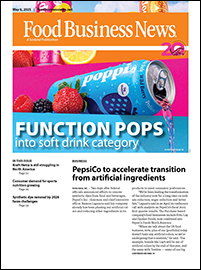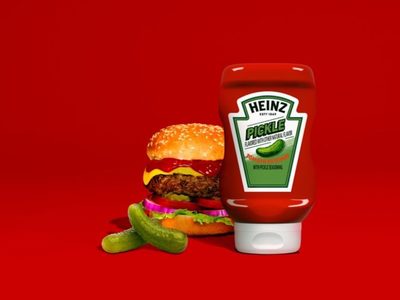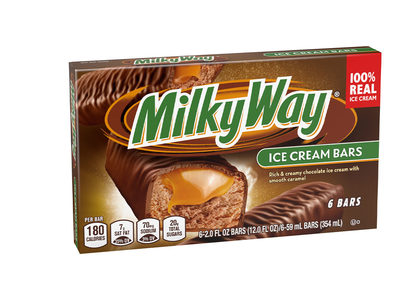KANSAS CITY — Companies formulating non-meat applications, but looking to highlight protein content, will need a promotional message, one that will be influenced by the protein source. Desired attributes vary. Almonds offer flavor in dairy alternatives. Mung beans come with sustainability benefits. Eggs have an excellent amino acid profile, and dairy protein offers nutritional benefits that plant-based alternatives may not have.
The International Food Information Council Foundation’s 2020 Food and Health Survey found interest in various forms of protein. When asked how their protein consumption now compared to a year ago, 28% said they were eating at least somewhat more poultry/eggs, which was the same percentage for protein from plant sources. Following the top two choices were seafood at 27%, plant-based dairy alternatives at 24%, dairy at 20%, plant-based meat alternatives at 17% and red meat at 14%. Plant protein got the nod on health with 70% saying they perceived it as healthy, which compared to a little over 50% for dairy and a little over 40% for animal protein.
Almonds for dairy alternatives
A survey released by San Francisco-based Mattson in June showed a preference for almonds in dairy alternatives. When the nearly 350 people surveyed online were asked what protein they thought tastes best in dairy-free alternatives for milk, cheese, ice cream and yogurt, 55% had almonds among their top three responses, which was the highest percentage for all protein sources and up from 26% in 2018.

“Almond protein powder has a clean taste and can be used within a neutral, non-dairy base for protein smoothies and shakes,” said Laura Gerhard, director of strategy and marketing for Blue Diamond Almonds Global Ingredients Division, Sacramento, Calif. “In these applications, almond protein aids in diluting the ‘earthy’ notes and textures contributed by other protein sources, such as pea or soy. Additionally, while almonds are one of the firmer nut types, the powder produced from the almonds can be milled to an ultra-fine granulation to produce a smoother mouthfeel than many other plant-based proteins. “
She added almond protein powder is an excellent source of biotin, phosphorous, copper, magnesium and manganese and a good source of calcium, potassium, zinc and iron.
Dairy’s nutritional advantages
Milk-free alternatives may face some regulatory issues concerning labeling, such as whether items like almond milk alternatives or soy milk alternatives meet the standards of identity for milk. Martin H. Hahn, partner and food regulatory lawyer at Hogan Lovells, Washington, spoke about the issue in a presentation at ShIFT20, the virtual event put on in July by the Institute of Food Technologists. Under the imitation regulation, plant-based products should contain the same levels of protein, vitamin D, vitamin A and any other nutrient that is present in dairy milk at a level of 2% or more, he said.
“If you look at these products side-by-side from a nutritional comparison, you can see some meaningful differences,” Mr. Hahn said. “That’s actually a concern from a legal perspective.”
Eggs’ perfect score
Eggs offer high-quality protein, a subject covered in an Aug. 5 webinar hosted by the American Egg Board, Chicago.
One large egg contains 6 grams of protein, said Mickey Rubin, PhD, executive director of the Egg Nutrition Center. Egg protein contains all the essential amino acids, which are ones the human body cannot make on its own. Humans also absorb and utilize all the amino acids in eggs, which have a perfect 1.0 score in the Protein Digestibility Corrected Amino Acid Score (PDCAAS).
Mung beans for egg alternatives

Eat Just Inc., San Francisco, has found a protein source that has been shown to replace eggs and offer sustainability advantages. Mung bean protein has gelation properties that are close to liquid whole eggs, said Meng Li, PhD, director of food science for Eat Just Inc., in a ShIFT 20 presentation.
The company offers a Just Egg liquid product that may be used to make scrambled egg alternatives or French toast. A Just Egg precooked folded egg alternative patty may be used in sandwiches or breakfast burritos. The company from April 2019, when Just Egg was launched, through June of this year sold more than 40 million egg equivalents and lessened water use by 1.47 billion gallons, the company said. A smaller carbon footprint and less land use are other sustainability benefits for mung beans.
The perception of pulses
The survey from Mattson asked people to name their top three plant protein sources based on nutrition. Pulses placed first, second and third as 57% of respondents put beans among their top three sources, followed by lentils at 45% and chickpeas at 36%. Pea protein, at 7%, has “no room to go but up,” said Barb Stuckey, president and chief innovation officer for Mattson, in a presentation at ShIFT20.
A survey from the United Soybean Board, Chesterfield, Mo., also looked at perception of plant-based protein. Consumers rated bean-/legume-based sources as having the highest quality at 56%, followed by chickpea at 50%, soy at 47%, pea at 45% and wheat gluten at 38%.
Cereal Ingredients, Inc., Leavenworth, Kan., at ShIFT20 featured fajitas, cheeseburgers and popcorn chicken made with texturized pea protein. Chickpea texturized protein was used in nuggets and white chili.
Archer Daniels Midland Co., Chicago, offers a portfolio of plant ingredients, including beans, lentils and chickpeas.
“From a formulation perspective, product developers can use different combinations of these ingredients to improve the nutritional profile, consumer appeal and overall value of a finished product,” said Jacquelyn Schuh, product marketing director, alternative proteins, for ADM. “For example, soy (a legume) has a high protein quality score comparable to animal proteins while beans and peas have a lower protein quality score. Blending beans or peas with a complementary plant protein, such as wheat protein, is an approach for increasing the overall protein score. This kind of blending is not necessary with soy, which has all the amino acids in proportions necessary to obtain a higher PDCAAS score.”
Manildra Group USA, Leawood, Kan., lists several reasons for choosing wheat protein. Since no chemicals are used for modification, clean label is one benefit. Wheat protein also offers texture benefits through viscoelastic quality, which provides a chewy bite to baked foods and snacks.
The process tolerance of wheat allows it to be used to improve efficiency, dough rheology and rework stability. Wheat protein fortifies the gluten network, which will help in overcoming the additions of inclusions like whole grains, nuts, seeds or other proteins that may disrupt the gluten network. Finally, wheat protein may be used as an egg replacer.
MGP Ingredients, Atchison, Kan., long active in wheat protein, in April launched the ProTerra line of textured proteins. ProTerra expands MGP Ingredients’ offerings with a new textured pea option that joins its proven textured wheat series (formerly known as TruTex). ProTerra is especially suited for use in vegetarian/vegan applications as well as in blended products as an extension or partial substitute for meat.
The rise of ‘flexitarians’ spurs sales
Perhaps plant-based protein and meat-based protein each will survive, work in blends and flourish in the food industry. Surveys show more people becoming “flexitarians” and seeking both meat and plant-based meat alternatives, and traditional meat companies have invested in plant-based protein.
Hormel Ingredient Solutions, a division of Austin, Minn.-based Hormel Foods Corp., is counting on a beef-plant co-existence as this year the company launched fully cooked plant-based meat alternative crumbles and uncooked plant-based meat alternative ground.
“As we look at the changing consumer, we continue to offer options for them,” said Paul Sheehan, director of sales for Hormel Ingredient Solutions. “It really boils down to the choice for the consumer. It’s why (Hormel Foods) acquired Skippy peanut butter, which is not meat but still protein, or Justin’s nut butters. It really diversifies our portfolio, and it brings us into some space where we haven’t been.”
Plenty of studies show future growth for plant-based meat alternatives. Technavio forecasts a compound annual growth rate of 41% for the global plant-based burger patties market from 2020 to 2024.
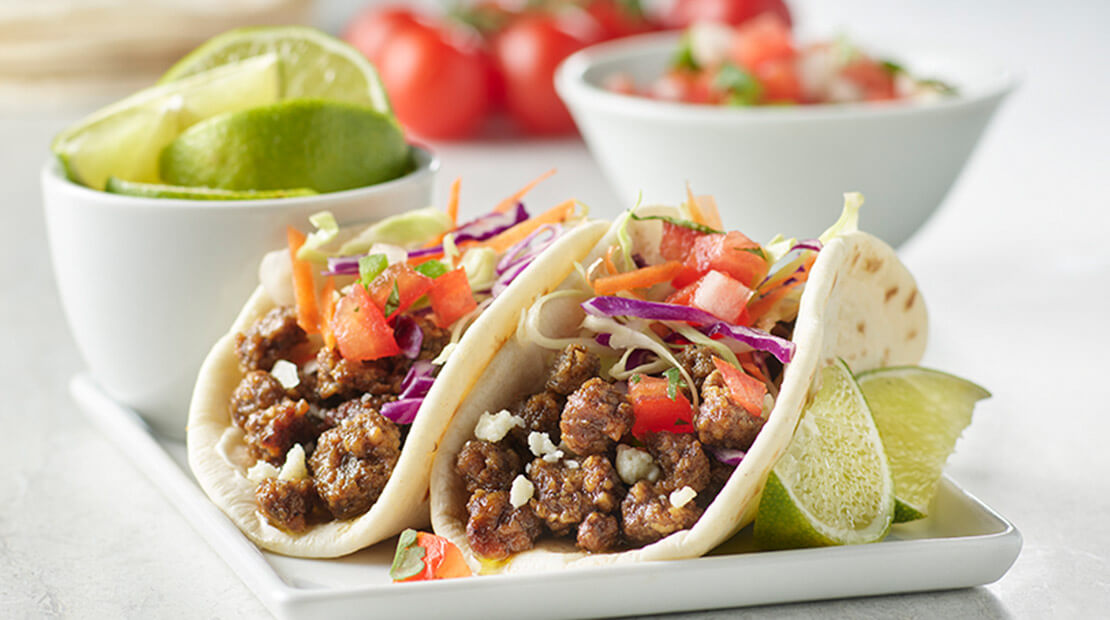
“Flexitarians,” defined as people who are cutting down on meat consumption but not eliminating it completely, are driving plant protein growth, according to a survey released in June by San Francisco-based Mattson. The survey found 62% of respondents said they were eating a variety of foods, including meat, dairy, fish and poultry; 20% said they were trying to eat less meat, dairy, fish and poultry; 12% said they were mostly vegetarian but occasionally eat meat, poultry or fish; 3% said they were vegetarian; and 2% said they were vegan.
“A wide range of people are really wanting plant-based,” said Amy A. Thielking, marketing manager for Hormel Ingredient Solutions. “So it is everybody from the non-meat eater to the meat eaters that are calling themselves maybe flexitarians. It’s kind of that personalized health movement. Some people just want to reduce their consumption of their overall animal proteins, and sometimes people just don’t want any (animal plant proteins).”
Plant-based meat alternative sales increased 23% when those items were sold in the meat department at retail, according to a report from The Plant Based Foods Association, a San Francisco-based trade association representing 170 plant-based food companies, and The Kroger Co., Cincinnati. The study, which ran for 12 weeks from December 2019 through February 2020, placed all plant-based meat alternatives in a 3-foot set within the meat department. The 60 test stores were in Colorado, Indiana and Illinois.
Ms. Thielking said Hormel Ingredient Solutions chose pea protein for its crumbles and ground for three reasons: texture, flavor and a protein source that worked well with the company’s equipment.
“While pea protein itself is kind of bitter, when we put it in there with the other ingredients, particularly mushrooms, it masks that pea protein flavor,” Ms. Thielking said.
Hormel Ingredient Solutions originally offered a traditional base flavor and Italian-style. Breakfast-style and chorizo-style recently were introduced as new flavors.
Archer Daniels Midland Co., Chicago, promotes pulses such as dry beans, lentils and chickpeas as ingredients for meat alternatives.
“For example, we recently developed a meatless burger patty using beans as the main source of protein,” said Jacquelyn Schuh, product marketing director, alternative proteins. “We replaced the visual characteristics and texture of animal protein burger by combining powdered and whole bean VegeFull ingredients in the formulation. VegeFull is ADM’s portfolio of cooked, dehydrated ingredients made from whole beans, which are available in whole bean, grit, meal and powder forms.”
